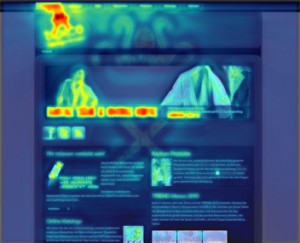Archive: Innovation Radar
Innovation Radar: Improving Websites by Neuroscience
How to improve user attention to your website? This is a crucial question because visitors decide in less than five seconds on whether to proceed and look further or to just click away.
Based on insights of neuroscience, the German company Whitematter Labs GmbH has developed EyeQuant, a patent-pending neurotechnology that helps companies optimize user attention.
The web-based tools identify the most eye-catching elements of a website using a predictive neuroscience model of human attention. The technology is based on eye-tracking data gathered in studies with several hundred human subjects conducted by visual neuroscientist Peter Koenig and his Neurobiopsychology Lab at the University of Osnabrueck, Germany.
The analysis can be performed by uploading screenshots to the EyeQuant website and is answering crucial questions: what will users see at first glance? Which elements of the website garner most attention? What are the regions of interest?

Website owners will get a map of the eye-catching sections and a perception map of what potential customers will focus on within the first few seconds – and what they ignore. Based on these data, websites can be further improved and subsequently tested again.
The technology thereby helps companies and web designers to understand and optimize landing pages and to improve conversion rates. EyeQuant offers the free analysis of two website screenshots. More detailed analyses can be booked for projects or as a flat rate, but it is also possible to obtain the tools as white label or to integrate it in own websites and marketing tools.
[poll id=”3″]


